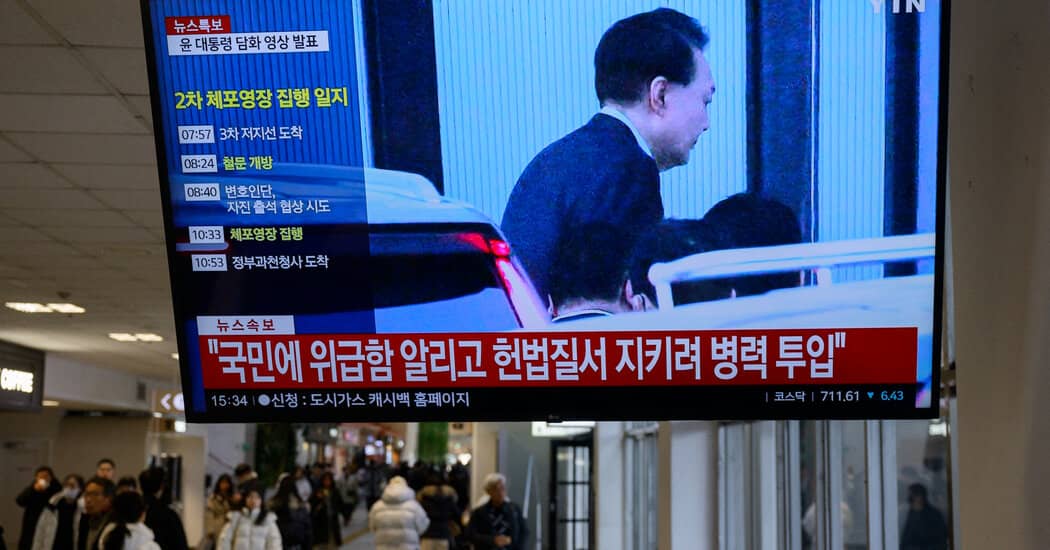South Korea Turmoil
President Yoon Suk Yeol, a former prosecutor, used to put people in jail. Now, after his formal arrest, he himself is in a cell, alone.
Reporting from Seoul
As president of South Korea, Yoon Suk Yeol lived in a luxurious hilltop mansion, threw parties and had a small army of personal guards. These days, he is alone in a 107-square-foot jail cell, eating simple food like noodles and kimchi soup, and sleeping on the floor.
This will be his new reality for a while yet, after he was formally arrested on insurrection charges early Sunday as part of an investigation into his ill-fated declaration of martial law last month.
Mr. Yoon, 64, has been in the Seoul Detention Center, a government-run jail south of Seoul, since Wednesday, when he became the first sitting president in South Korean history to be detained in a criminal investigation. When a district court in Seoul issued the warrant to arrest him, he went from being a temporary detainee to a criminal suspect facing an indictment and trial.
That change in status meant that Mr. Yoon was unlikely to leave jail any time soon. Within the next 18 days, criminal investigators and prosecutors were expected to indict him on charges of leading an insurrection during his short-lived martial law last month. If he is convicted, he will face life imprisonment or the death penalty.
Mr. Yoon’s new circumstances were symbolic of his dramatic fall from grace: from a swaggering head of state to an impeached president to an inmate accused of committing one of the worst offenses in South Korea’s criminal code. He is the first South Korean to face insurrection charges since the former military dictator Chun Doo-hwan, who was convicted in the 1990s.
We are having trouble retrieving the article content.
Please enable JavaScript in your browser settings.
Thank you for your patience while we verify access. If you are in Reader mode please exit and your Times account, or for all of The Times.
Thank you for your patience while we verify access.
Want all of The Times? .
Source: www.nytimes.com
